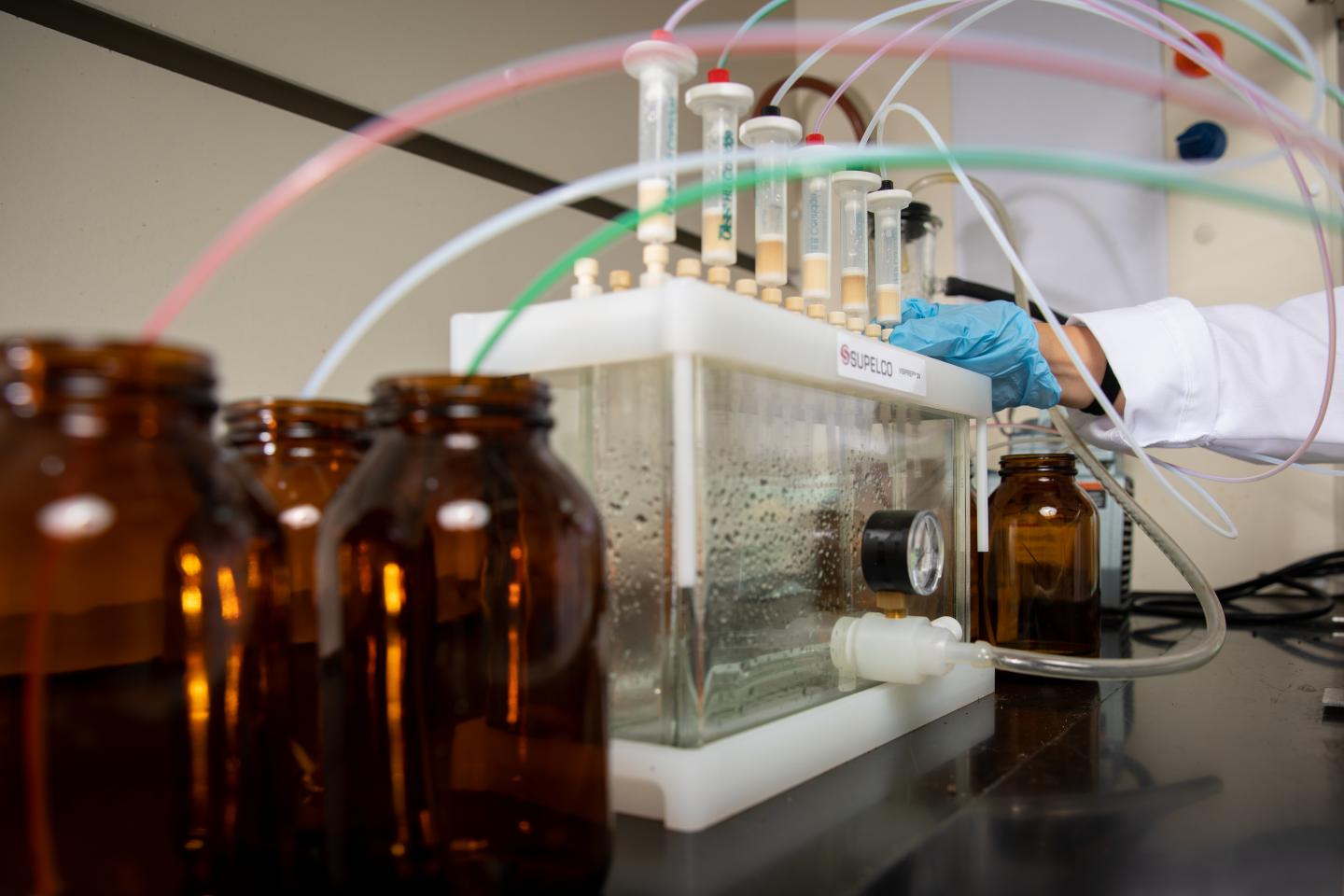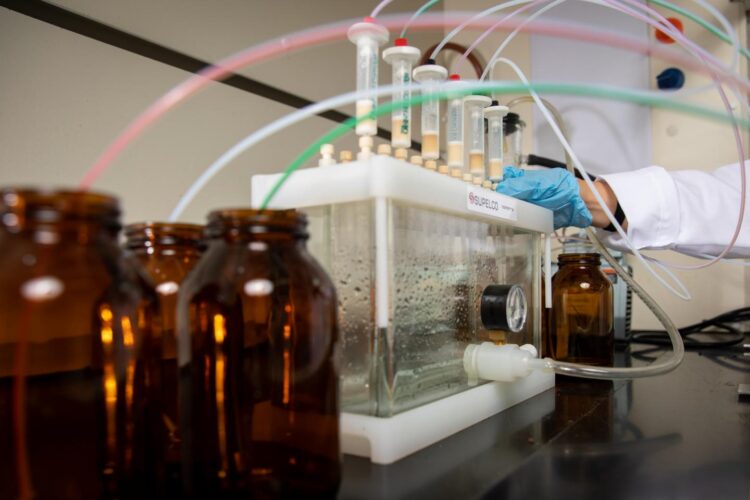Antifungals, antibiotics and other drugs were found in water in urban and rural areas, raising concerns about the spread of antifungal and antimicrobial resistance

Credit: Credit: Meredith Forrest Kulwicki
BUFFALO, N.Y. — In spring of 2019, researchers set out to investigate what chemicals could be found in the waters of Bangladesh.
The scientists — from the University at Buffalo and icddr,b, a leading global health research institute in Bangladesh — tested a lake, a canal and a river in Dhaka, Bangladesh’s capital and the nation’s largest city. The team also sampled water from ditches, ponds and drinking wells in a rural area known as Matlab.
In the lab, an analysis revealed that the waters held a cocktail of pharmaceuticals and other compounds, including antibiotics, antifungals, anticonvulsants, anesthetics, antihypertensive drugs, pesticides, flame retardants and more.
Not all of these chemicals were found at every location, and sometimes amounts detected were low.
But the ubiquity of contamination is concerning, says lead scientist Diana Aga, an environmental chemist at UB.
“When we analyzed all these samples of water from Bangladesh, we found fungicides and a lot of antibiotics we weren’t looking for,” says Aga, PhD, Henry M. Woodburn Professor of Chemistry in the UB College of Arts and Sciences. “This kind of pollution is a problem because it can contribute to the development of bacteria and fungi that are resistant to the medicines we have for treating human infection.”
The study appears in the April 10 volume of the journal Science of the Total Environment, and was published online in December 2019. The research, funded by the UB Community of Excellence in Global Health Equity, was a partnership between UB and icddr,b.
Compounds the team found at every sampling site included the antifungal agent carbendazim, flame retardants and the insect repellent DEET.
The canal and river in Dhaka contained a medley of chemicals. Of note, scientists discovered multiple varieties of antibiotics at these two sites, along with antifungals. While researchers generally found fewer antimicrobials at the rural test locations, some antibiotics were found at certain sites, and antifungal agents were common.
“The fact that we found so many different types of chemicals is really concerning,” Aga says. “I recently saw a paper, a lab study, that showed exposure to antidepressants put pressure on bacteria in a way that caused them to become resistant to multiple antibiotics. So it’s possible that even chemicals that are not antibiotics could increase antibacterial resistance.”
Aga’s team included first author Luisa F. Angeles, a PhD candidate in UB’s Department of Chemistry, who traveled to Bangladesh to sample water and train scientists there on sample collection and preparation techniques.
Afterward, Aga, Angeles and colleagues studied the water in their Buffalo laboratory using state-of-the-art analytical methods.
In the past, technological limitations meant scientists could only test samples for specific targeted chemicals. Aga’s team was able to employ a more advanced form of analysis that screens samples for a huge variety of pollutants — checking for more than 1,000 potential compounds in this case, including ones the researchers did not anticipate finding.
The discovery of antimicrobials in urban areas was not surprising, as these chemicals are often found in human urine and later in wastewater that’s released into rivers, Aga says. She thinks at rural sites, the presence of antibiotics and antifungals in water may be due to the fact that people may be using these chemicals to protect food crops and farm animals.
“It’s important to note that antimicrobial contamination of the environment is not unique to Bangladesh, but expected in many countries throughout the world where antimicrobial use is poorly regulated in both human medicine and agriculture, which is generally the case in lower-middle income countries of Asia,” says study co-author Shamim Islam, MD, clinical associate professor of pediatrics in the Jacobs School of Medicine and Biomedical Sciences at UB.
Islam adds that, “As undertaken in this study, we feel analyzing and characterizing such environmental antimicrobial contamination is a critically important component of global antimicrobial resistance surveillance and mitigation efforts.”
###
In addition to Aga, Angeles and Islam, the study’s co-authors included Jared Aldstadt, PhD, associate professor of geography at UB; and Kazi Nazmus Saqeeb, Munirul Alam, Md Alfazal Khan, Fatema-Tuz Johura and Syed Imran Ahmed, all from icddr,b.
Media Contact
Charlotte Hsu
[email protected]
Original Source
http://www.
Related Journal Article
http://dx.





